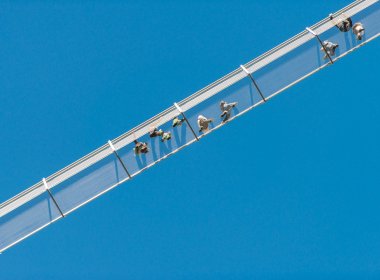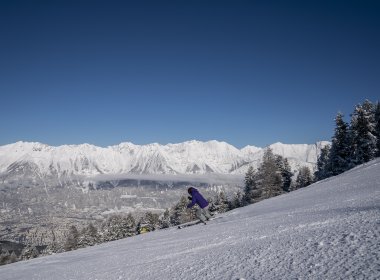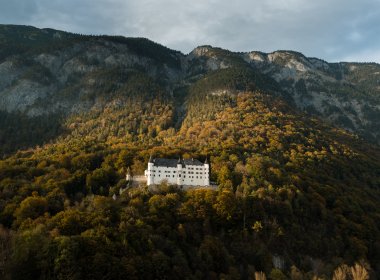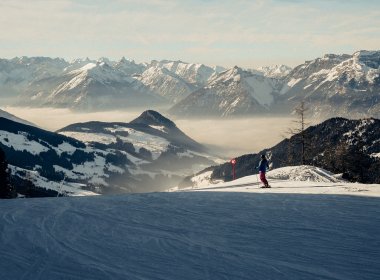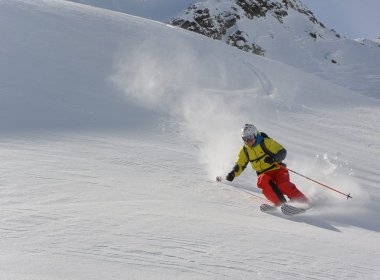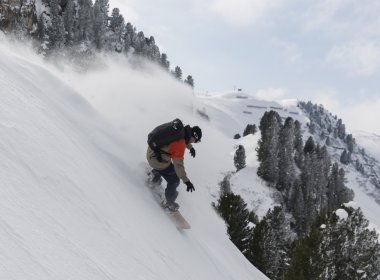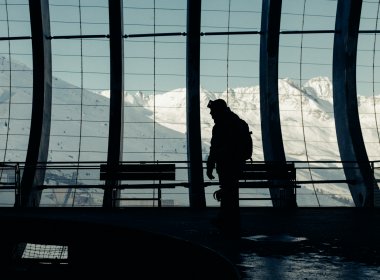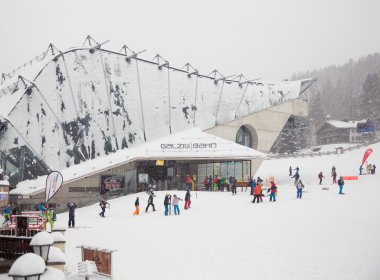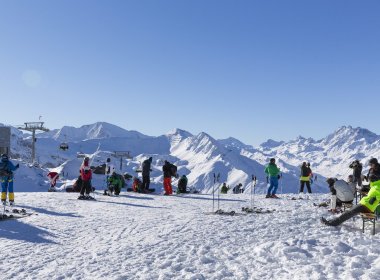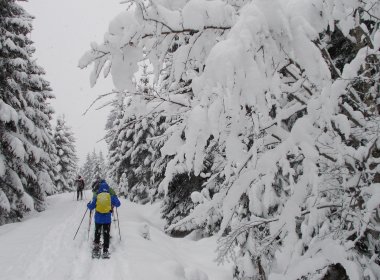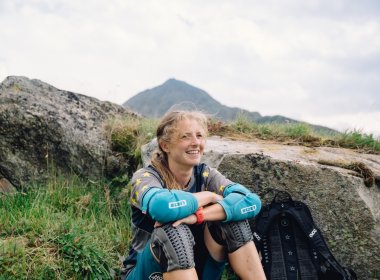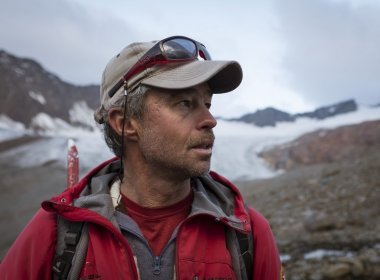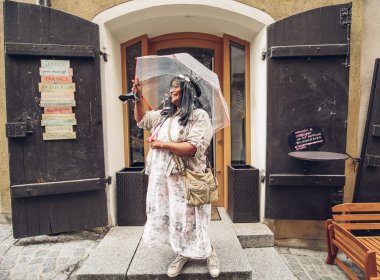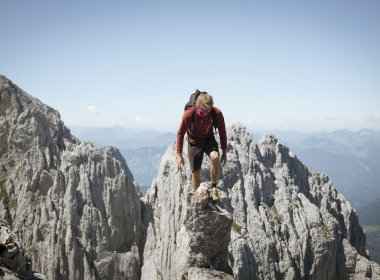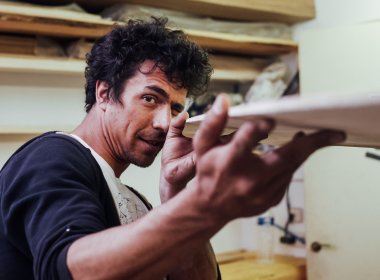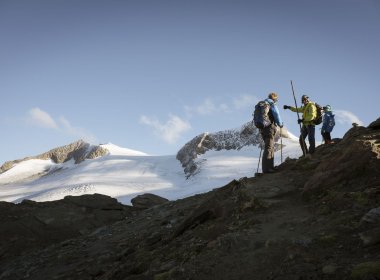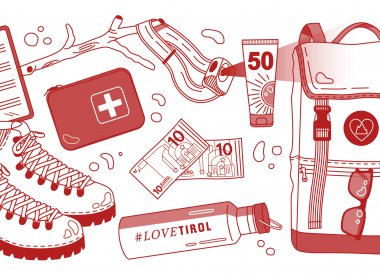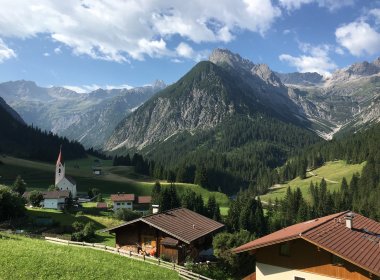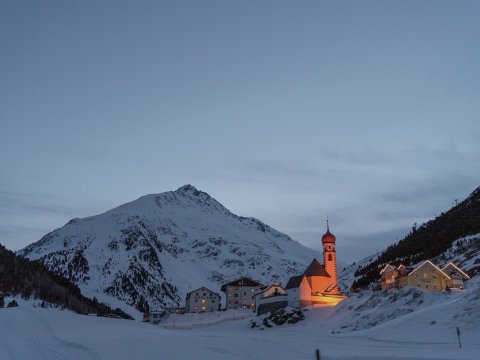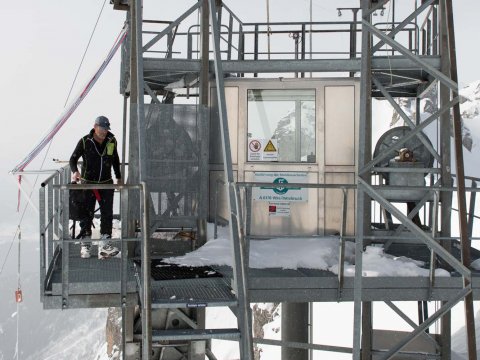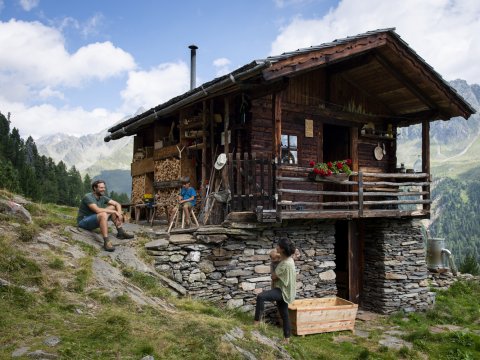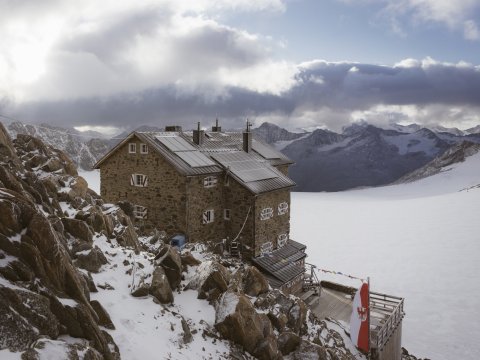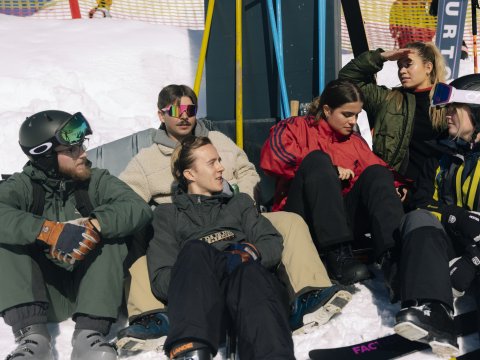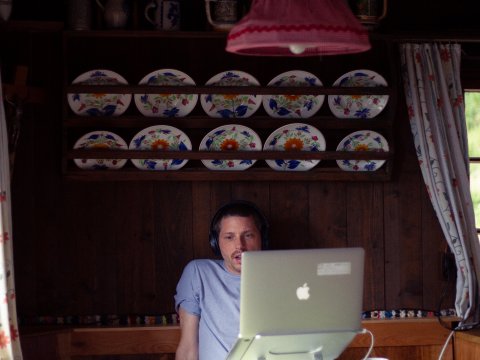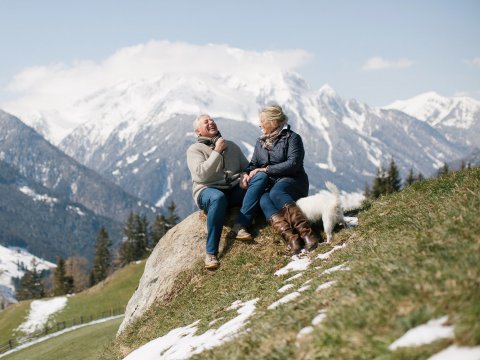Summit Stories: Bernhard Neumann, Olperer
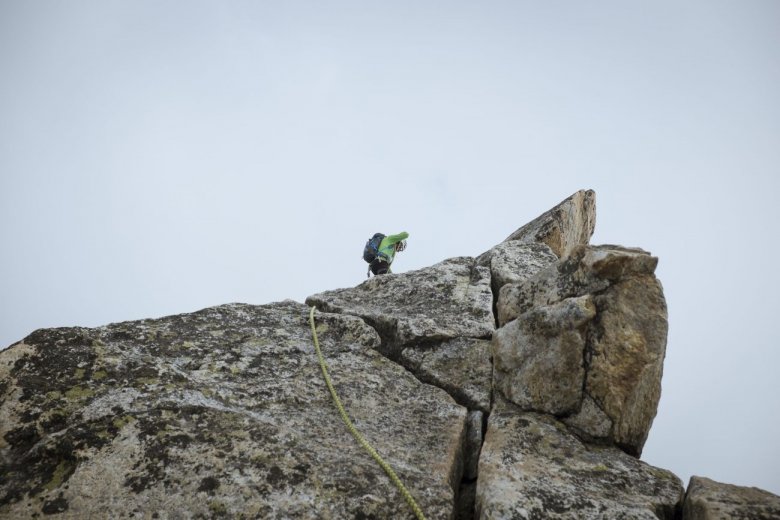
We hear the mountain creaking and cracking as if it is about to break apart. The glacier here is a jumble of "seracs", giant chunks of ice cleaving and tumbling slowly down the glacier. Our guide, Bernhard Neumann, tells us we are lucky – few people get to observe this natural spectacle at close quarters. We are en route to climb his mountain, the 3,476-metre peak of the Olperer. Bernhard looks like your typical mountain guide: weather-beaten, sun-tanned, dark haired, tough and wiry, wearing a three-day stubble of beard, a cap and sunglasses. He first stood on the summit at about ten years of age, together with his father who is a mountain guide as well. He doesn’t remember the exact date – after all, he has been up here more than 100 times.
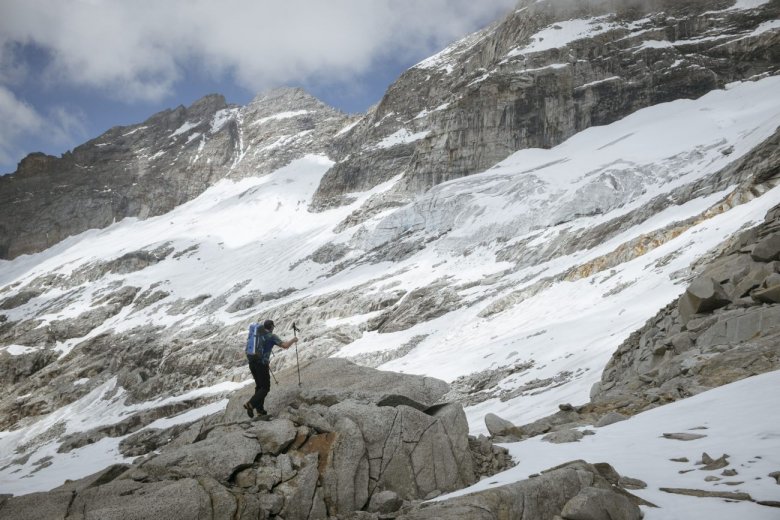
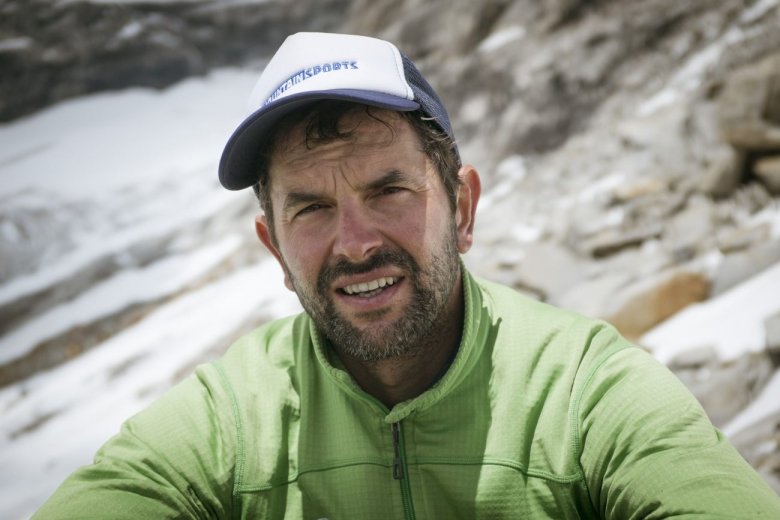
Bernhard runs a mountaineering centre in Mayrhofen and works himself as a guide. His wife Kathrin manages the office at the mountaineering centre, he tells us. While others travel to the Caribbean, the two of them spent their honeymoon on Chilean volcanoes. On skis. Kathrin deals with requests and handles bookings for Kilian as a guide, so it was her that we were in touch with to organise today's adventure to the top of the Olperer.
We have already tackled the first and easiest section of our hike, the ascent from the Schlegeis reservoir (1,782 metres) to the Olpererhütte hut (2,389 metres). Soon after leaving the hut we meet two women accompanied by a Siberian Husky. They are returning from an early morning hike to the top of the 3,072-metre-high Riepensattel. Bernhard is good friends with one of the two women, Katharina, who runs the Olpererhütte. “Earlier, before we had children, my wife and I used to climb up to the Olpererhütte after work to have dinner up there,” says Bernhard. “The huge glass front offers some spectacular mountain views. And the staff, led by Katharina and head chef Manuel, do a great job.”
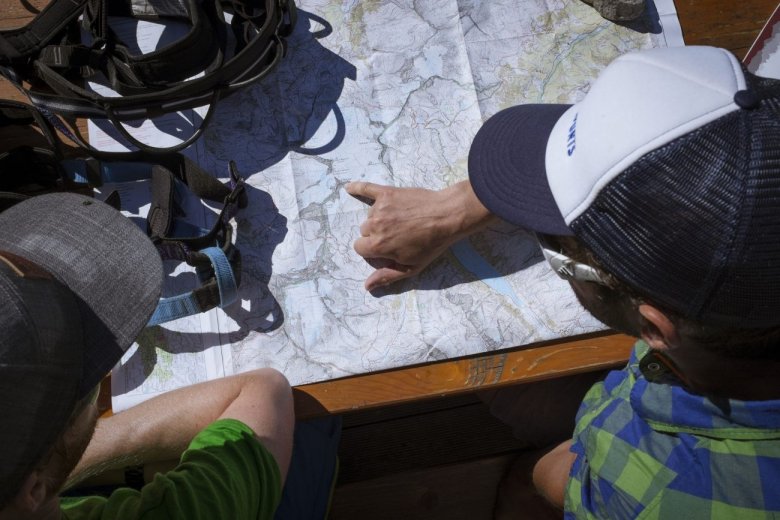
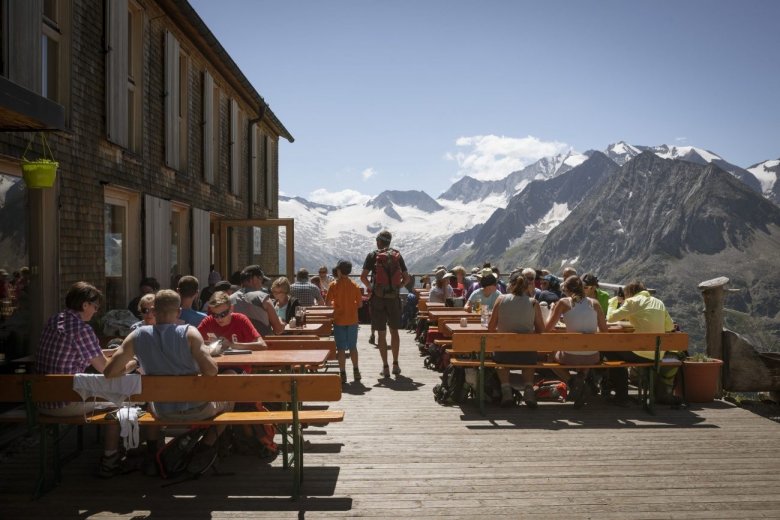
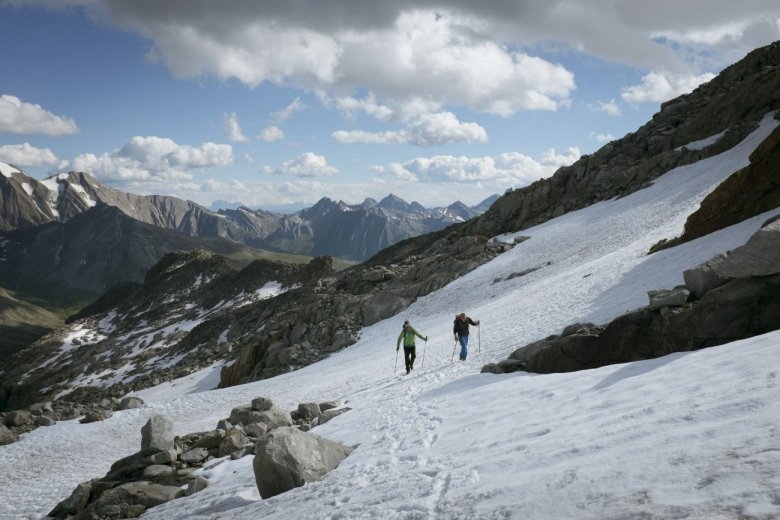
Looking to the south, a seemingly infinite array of peaks stretch out before us. Bernhard names some of them for us: Hochfeiler, the highest mountain in the Zillertal Valley at 3,510 metres, Hoher Weißzint, Großer Möseler. It is in this environment that Bernhard Neumann grew up. At the age of 20, he embarked with friends on an ambitious winter crossing of the Olperer from north to south. That was the moment when he recognised that heading out into the mountains with no experience is pretty dangerous, remembers Bernhard. Some of his friends didn’t know a lot about mountaineering, he recalls. It was an important experience for him – and one that inspired him to become a mountain guide. Today, in his early forties, it is he who is the one teaching the next generation of mountain guides.
I hear a deep growl again. This time, though, it’s not the seracs to our left. To the right, about one kilometre as the crow flies, I see a piste groomer on the Tuxer Ferner glacier. It’s only now that I spot the ski runs criss-crossing the area below the summit of the Gefrorene Wand. Skiers cruise down the wide open slopes. Skiing on 19 July? Well, yes. Hintertux Glacier is home to the only ski resort in Austria open 365 days a year.
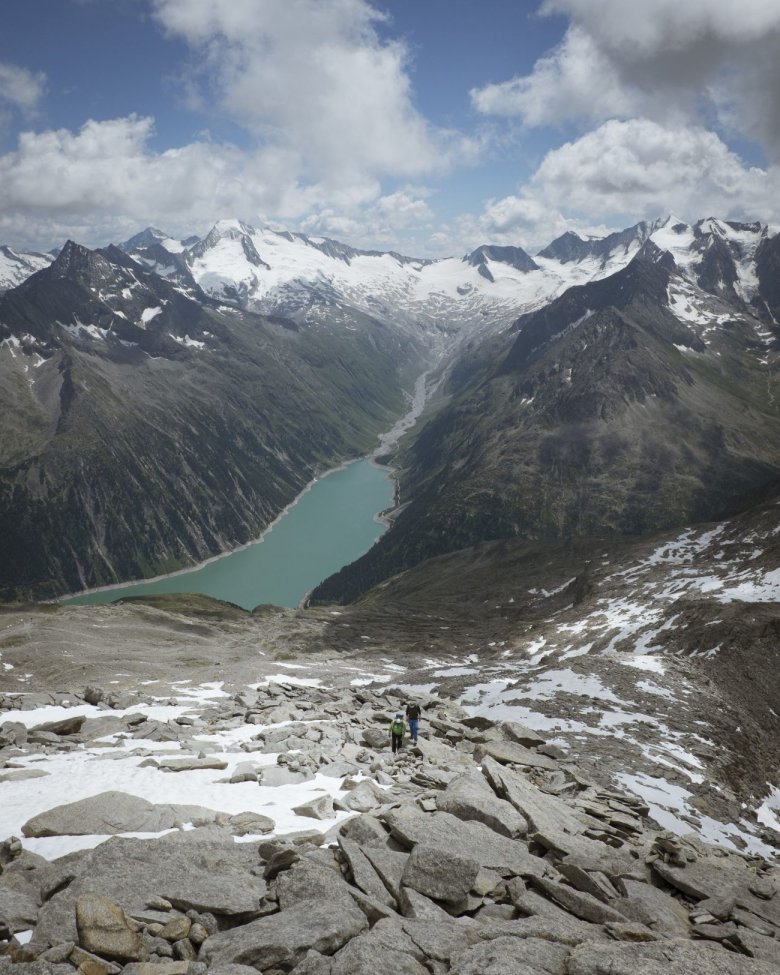

These days it takes just one day to climb from the Hintertux Glacier ski resort to the top of the Olperer and back again. However, climbing the Olperer used to be an extreme challenge. Before the installation of a cable car onto the glacier, mountaineers had to climb up to the Spannagelhaus hut, situated at an elevation of 2,600 metres. From there it was still a long and steep climb to the top of the 3,476-metre Olperer – with a long section on the glacier. “My wife’s 86-year old uncle, who was a mountain guide and shoemaker, did it that way,” says Bernhard. “It was a hard technical route for mountaineers in those days.” Even today it is not all that easy climbing to the top of the Olperer and back again in just one day. “The lift opens at 8:15 and closes at 16:00, so you only have a certain amount of time. Aspiring Olperer climbers wanting to scale its northern ridge need excellent technical climbing skills. There are treacherous and smooth slab sections that are slippery and the drop off is steep. Moreover, you should not underestimate that the high elevation takes a toll, even on fit hikers. The quick gondola ride offers gives you almost to time to acclimitise to the thin air up here. Given the rugged terrain, there are times every step can be a struggle. The dividing line between day-hiking and alpine conditions is blurred here.”
We have opted for the less technical route leading along the south face. It means we have almost 1,700 metres of vertical gain to hike before we get to the summit at 3,476 metres. That's quite a lot for a day hike, given the many times we have to stop to get pictures. We begin to climb with a rope and a harness. Bernhard leads us through a snowfield called “Schneegupf”. Snow fell last week and in some places, we sink into the snow almost to our knees. “A few days ago I had to cancel a tour to the Olperer because of the risk of avalanches,” says Bernhard. In the middle of July. Today, we are lucky – snow conditions are safe for climbing despite a few treacherous, icy sections.
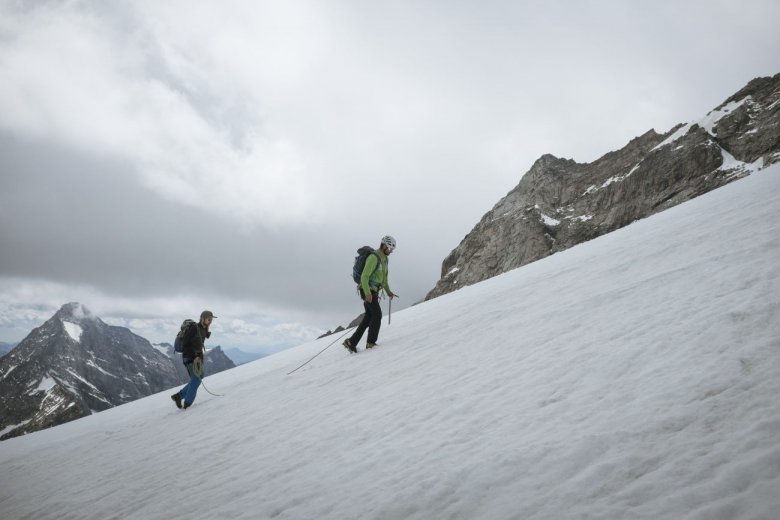
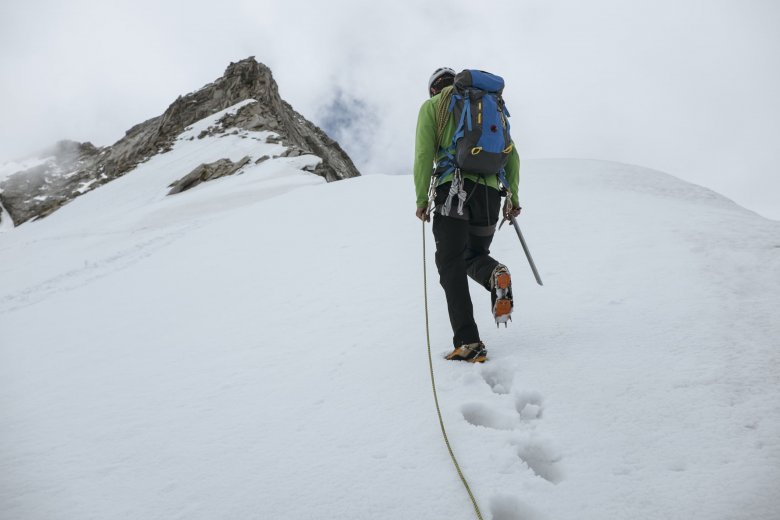
We reach an elevation of about 3,200 metres and continue our scramble up over rocks and boulders. There are a number of wires anchored into the rock to help our progress. In between we spot some old iron steps. This is where the first recorded ascent of the Olperer took place in the year 1867. Paul Grohmann, Georg Samer and Jackl Gainer were the trio who first conquered this tricky section without fixed wires. We are quite happy to have the fixed wire in place up here in this truly rarefied air. After all, there are exposed ledges that drop down a few hundred metres right next to us.
A few minutes later, at 3,450 metres, we catch our first glimpse of the cross atop the summit of the Olperer. The last few last vertical meters, marked by the rocky and jagged summit ridge, feel interminable. It’s getting late and we are running out of time. After all, we have to keep in mind that we need to get down the mountain as well. I am exhausted. “We are all tired, me too, I am not a machine,” says Bernhard. “You have to know when to turn around to avoid disaster. The later the worse. And we really have come a long way. And although the summit is near it’s better to turn around now. It’s still a long way back down.”
We retrace our steps back down to the Olpererhütte hut. Katharina tries her best to comfort us. “Now you have a reason to come back. And that’s a good thing!” Alpenglow has set the Olperer mountain aflame with orange light. The clouds have passed away. Bernhard looks up. “I have stood on that summit more than a hundred times, but it has never thrown me off.” His words remind me that, when it comes to mountaineering, there are far worse things than simply turning around and heading back home.
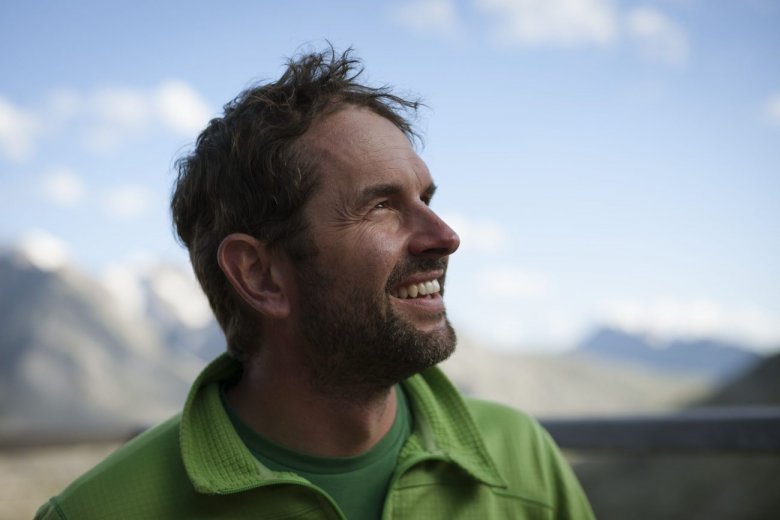
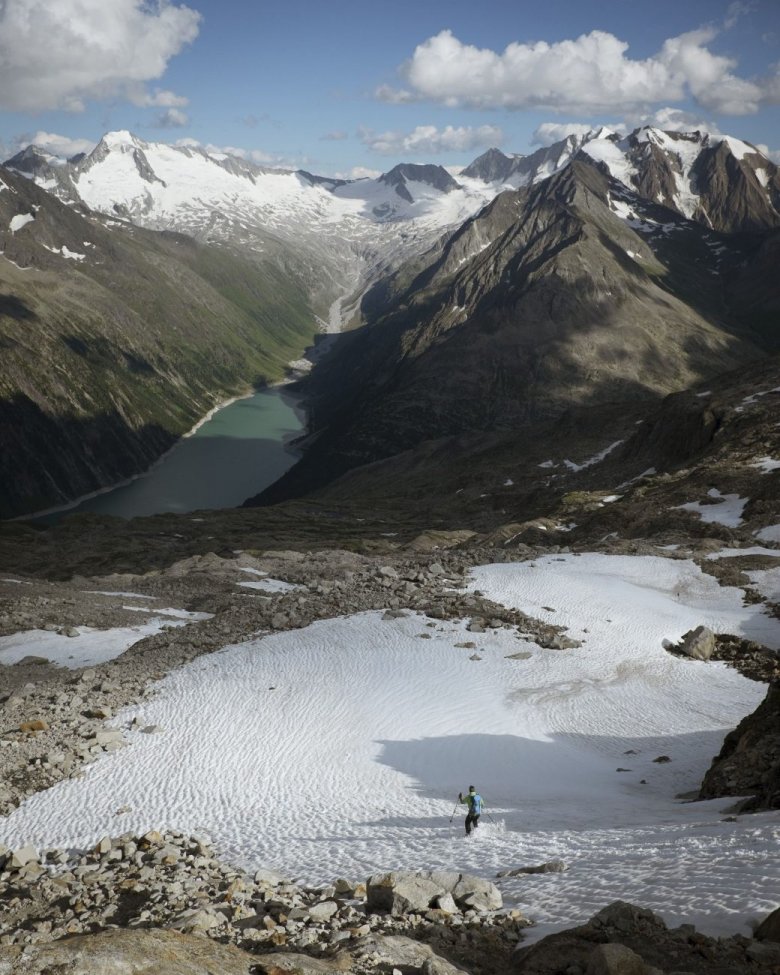
—
Großglockner, Wildspitze, Großvenediger, Wilder Kaiser, Olperer – we tell the stories of five mountain guides from Tirol and the mountains that have shaped them.
If you want to join Bernhard Neumann for a guided tour please visit the website www.mountain-sports-zillertal.com










